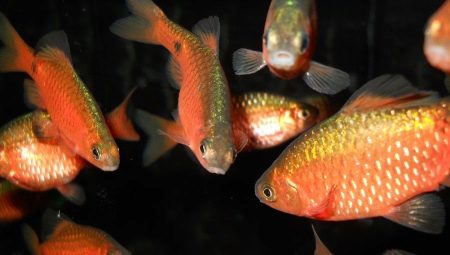Barbuses (or barbel) belong to the genus of ray-finned fish and belong to the family of cyprinids. In the wild, they are found in water bodies of countries such as Malaysia, Indonesia, on the island of Sumatra. These fish began to be massively bred in the 30s of the XX century. Today, barbs are one of the most popular aquarium fish, now about 15 species that can be successfully bred at home are bred. We will talk about the red barbus.

Selection history
Sumatran red barbs are genetically modified fish. They appeared as a result of the introduction of the genes of marine animals into the genes of an ordinary Sumatran barbus. Thanks to this, a red fish was born that has the ability to glow. Red striped barbs are often referred to as the glofish barbus (from the English word glofish - luminous fish), it can also be called transgenic.
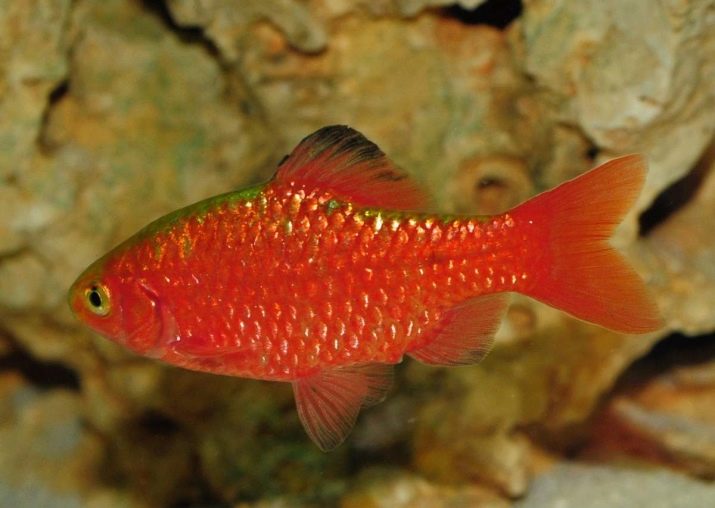
Appearance and Behavior
In an aquarium, red barbs reach 4-6 cm in length, they have a flattened body, triangular fins and a two-bladed tail. Mustache in this species is absent. The background is a catchy coral shade, along which 4 black stripes pass vertically. This view looks especially impressive when illuminated by a blue lamp. Females are distinguished by large forms and a full round abdomen, while males are more elegant and more brightly colored.
Red barbs are very mobile and playful fish, they are constantly moving, exploring the bottom, catching up with each other. Unlike other types of barbs, which are badasses, red individuals have a very peaceful disposition. They prefer to swim in the upper and middle water layers.
It should be noted that these are schooling fish, and if you keep a barbus alone, then it will live much less and will be sick more often. The best option is to keep a flock of 5-6 fish in the aquarium.
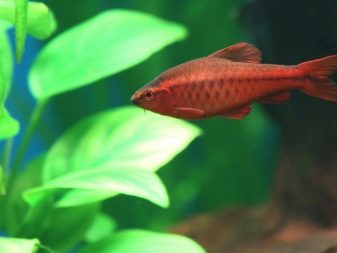
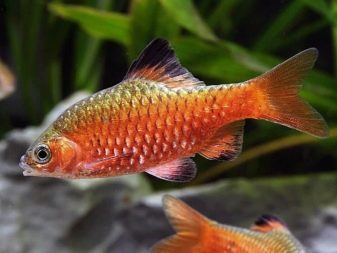
The necessary conditions
In order for the red barbus to live in the home aquarium for as long as possible, The following expert recommendations must be observed
- The volume of the aquarium. The capacity should not only be voluminous, but long (not less than 55 cm). For 5-8 fish, approximately 80 liters of water will be required.
- Lighting. Red barbs love moderate light. The aquarium should be located near the window, and in the evening you must definitely turn on the backlight.
- Water requirements. Water must certainly be defended. The acidity required for these fish is 6.5-7.5 pH. Hardness - from 4 to 10. A comfortable temperature in the aquatic environment is 20-25 degrees Celsius. Once a week, 1/4 of the volume of water should be replaced.
- Priming. It is preferable to make the bottom in dark colors. Against its background, red barbs look especially impressive and bright. Medium or coarse sand, pebbles or a special soil mixture is suitable.
- Equipment. In the wild, these fish live in running water. Therefore, with the help of a compressor and a filter, you need to try to recreate the flow of water. In addition, the compressor will enrich the water with the necessary oxygen, and the filter will make it clean.
- Plants and decor. Plants should not be planted very densely, as nimble barbs will need a lot of space for swimming. The best choice is floating plants: salvinia, duckweed, and richchia. But for these fish you need to plant some thickets as a shelter, using, for example, water fern. Do not decorate the aquarium with large objects, so as not to interfere with the fish actively swimming.
- Feeding. Red barbs can be given dry, frozen or live food (tubule, bloodworm, daphnia). Feed should be 2 times a day in small portions. The remains of food lying at the bottom, these fish are carefully selected. It is also necessary to include herbal supplements in the diet so that barbs do not eat young shoots of plants.
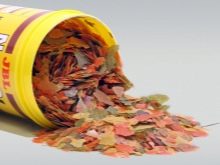


Breeding
Raising red barbs is easy. To begin with, a spawning ground should be equipped, in which an aquarium with a volume of at least 10 liters is suitable. Old water must be poured into it and 30% of the settled fresh. Soil is not required; plants are laid at the bottom to protect the eggs from being eaten by fish. It is also necessary to obscure the spawning grounds.
Females with a full abdomen and active males are planted in the evening in a prepared aquarium. Spawning usually occurs the next morning. The female swallows several hundred eggs, the male fertilizes them. Immediately after this, parents should be removed from the spawning grounds so that they do not eat caviar.
Larvae appear after 24 hours. At first they hide, and on the fourth day the fry are already able to swim and eat food.
You can give them rotifers or ciliates. When they grow up, it is recommended to feed small crustaceans. Red barbs grow quickly and with good care are able to reproduce their own kind in 8-10 months.
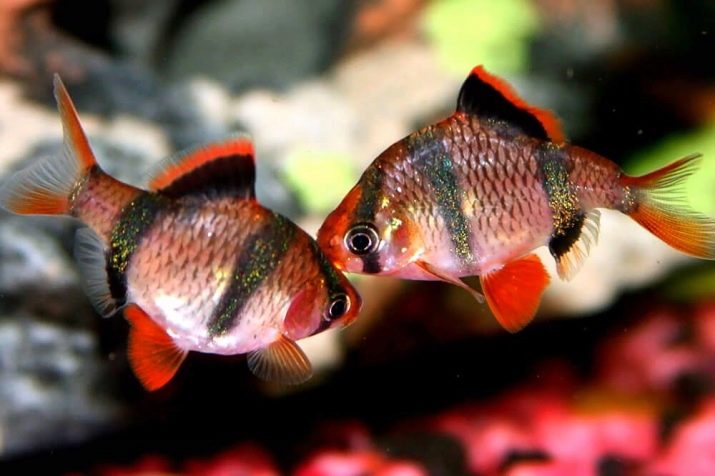
Compatibility
As already noted, red barbs are peaceful aquarium fish. Suitable neighbors for them would be gourams, Pecilia, swordsmen, catfishes. Tender fish, for example, neon, in an aquarium with barbs is better not to place. The best solution is to place several non-aggressive species of these fish together. Red barbs are spectacular aquarium fish. They do not require special conditions of detention and are not very difficult to care for, which allows even novice aquarists to start them.
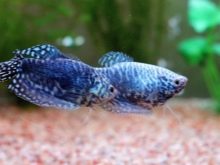
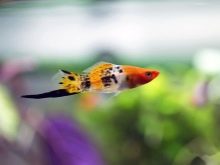
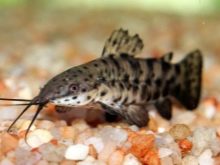
On the red Sumatran barbus, see below.
